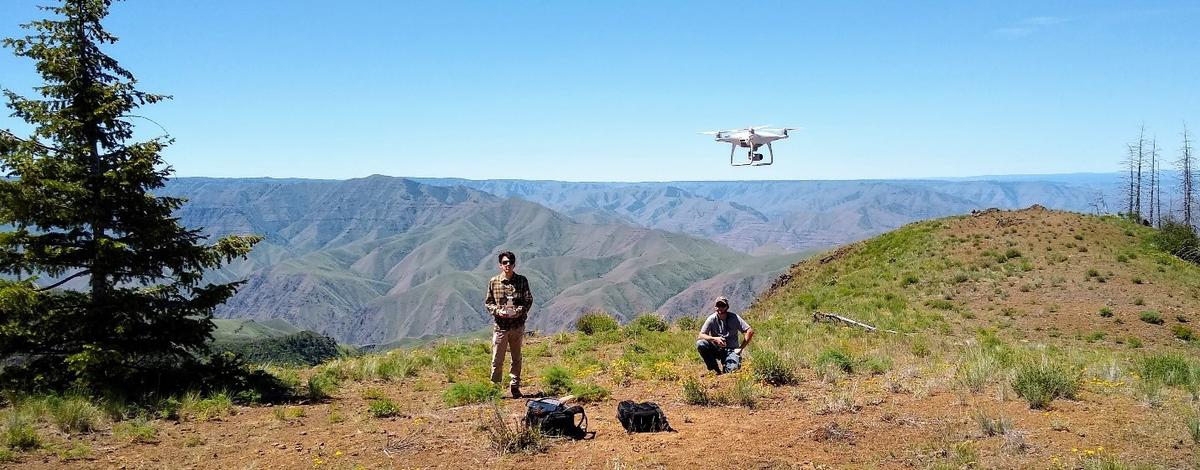Introduction
Welcome to the Craig Mountain Wildlife Management Area (CMWMA) and Joseph Plains Wildlife Habitat Area (JPWHA) annual newsletter! We hope to use this letter as a way to inform the public of what has been done and what we plan to do each year on the Wildlife Mangagement Area (WMA)! First off, let us meet the local Idaho Fish and Game (IDFG) faces of the mountain: Andrew Mackey is the Manager of the WMA. As the manager, he works closely with our partners such as the Bureau of Land Management (BLM), Idaho Department of Lands (IDL), Nez Perce Tribe and private landowners to help improve access, habitat and recreation opportunities. A new face of the WMA is Jessica Patterson, she is the Sr. Wildlife Technician on the WMA. As the Sr. Technician, she is the “boots on the ground.” She is responsible for managing our crew of seasonal technicians, making work plans, managing projects, and making the WMA run smoothly!

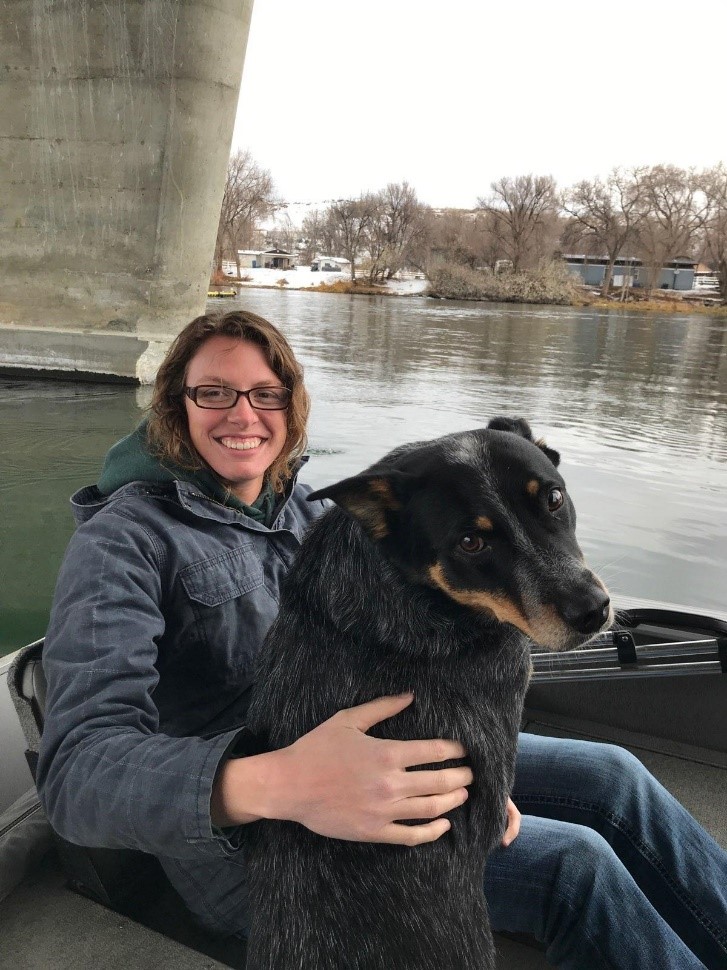
Joseph Plains Wildlife Habitat Area
Most of you have heard of Craig Mountain and are very familiar with the recreational opportunities available there, but how many of you have been to or even heard of Joseph Plains WHA? This property is not owned by IDFG but it is actively managed by IDFG to improve habitat, increase sportsman access and maintain crucial habitat for elk and mule deer. The property consists of two separate parcels totaling over 1,300 acres and are nestled between private property, Idaho Department of Lands, United States Forest Service (USFS) and Bureau of Land Management. Therefore the property enables over 9,000 acres of more continuous hunting opportunities within Unit 13.
We are currently working with Rocky Mountain Elk Foundation (who have a conservation easement on the property) and Idaho Fish and Wildlife Foundation (owners of the property) to cooperatively construct a parking area, install directional signs, and a kiosk for the WHA. Plans are to begin construction in the spring and have everything completed by the end of June. We also hope to get the property on our website to make travel and use of Joseph Plains more accessible.
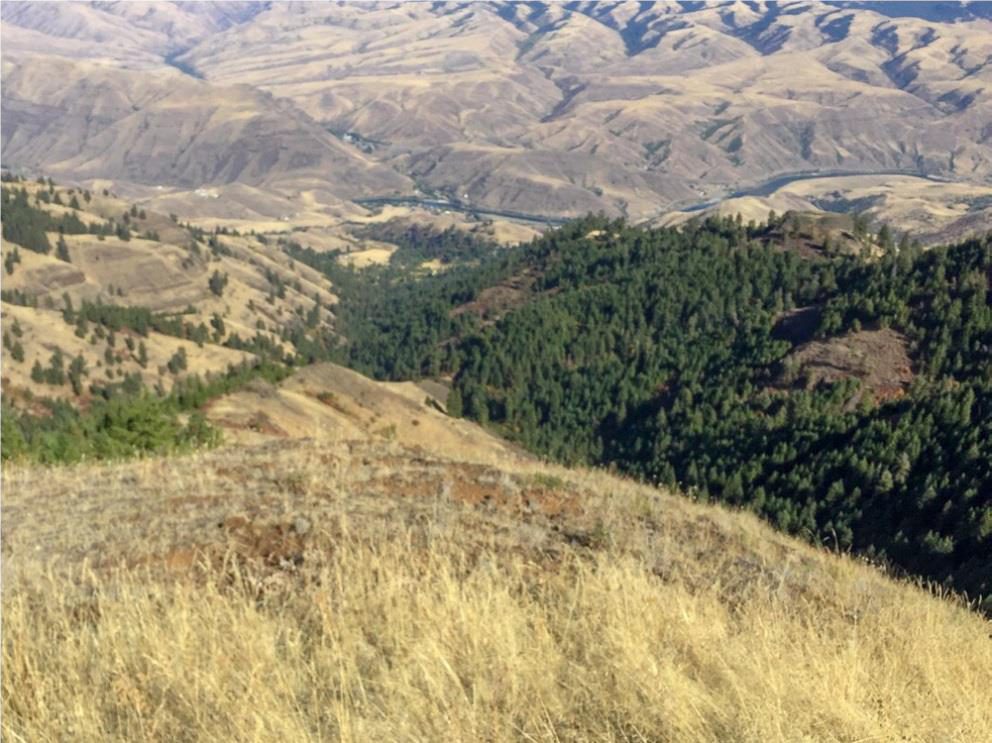
Trail Project Updates
For those who may not have heard, we have been working on renovating a historic Mid-Elevation trail that goes around the mountain. In the spring and early summer of 2019 we had the Montana Conservation Crew out working on rehabbing trail tread, brushing back and cutting out logs on the worst section of the Mid-Elevation trail. Their work was impressive and sure looks good! In addition, our crews have been out working on other sections of the trail including marking and cutting out logs and building a foot bridge for crossing Captain John Creek. This spring, we have another crew set for clearing more of the trail. By the end of the summer we hope to have the majority of the trail cleared, marked, and ready for use. Be looking for an update on project completion and a map product!
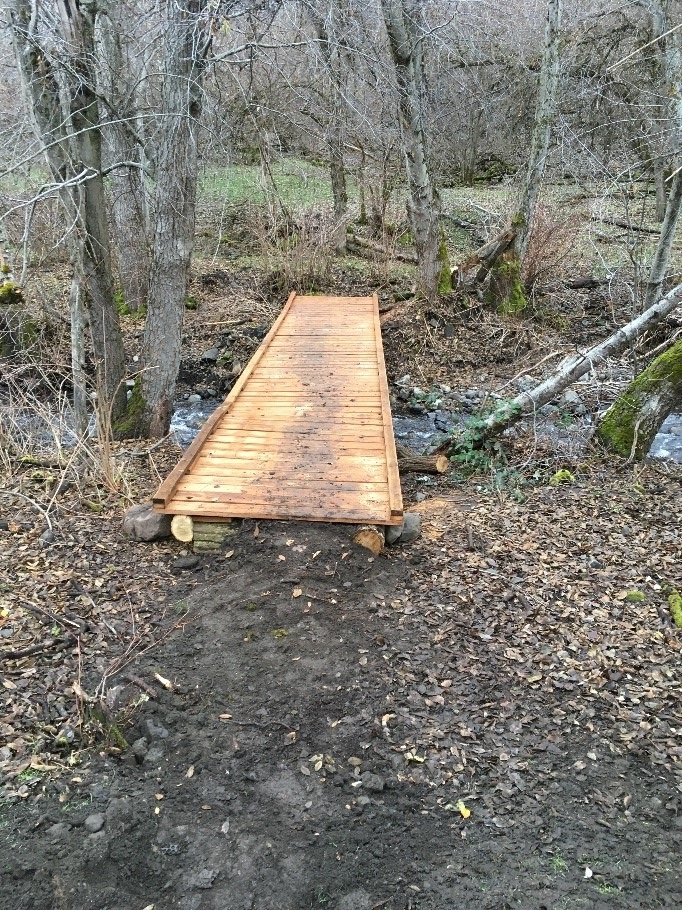
Wing Barrels
In my last issue, I briefly discussed the blue wing barrels we had dispersed across the WMA. These barrels have helped us look at us at various access points, collect comments and of course look at harvest results. The 2019/2020 hunting season has been a rollercoaster for chukar hunters as far as finding birds. The last two years has proven to be some of the best ever! We will soon be collecting the barrels and synthesizing the information from the last three years to produce a report. We appreciate everyone who has been participating in these efforts!
Public Use Cabins
Our crews did a fantastic job making sure every cabin on the WMA was updated, fireproofed, and ready for the 2019 hunting season. Work included putting gravel and metal flashing around each cabin, installing woodstoves, water troughs, and ensuring all cabins have the bare necessities. Cabins are generally maintained by volunteer groups and we ask the public to please look after them. The work IDFG staff and volunteers put into the cabins has been a last ditch effort to prevent them from burning again in the future. We are currently working on a pamphlet on the cabins to have at the front desk and online. Until then, if you have questions feel free to contact the front desk or myself for more information!
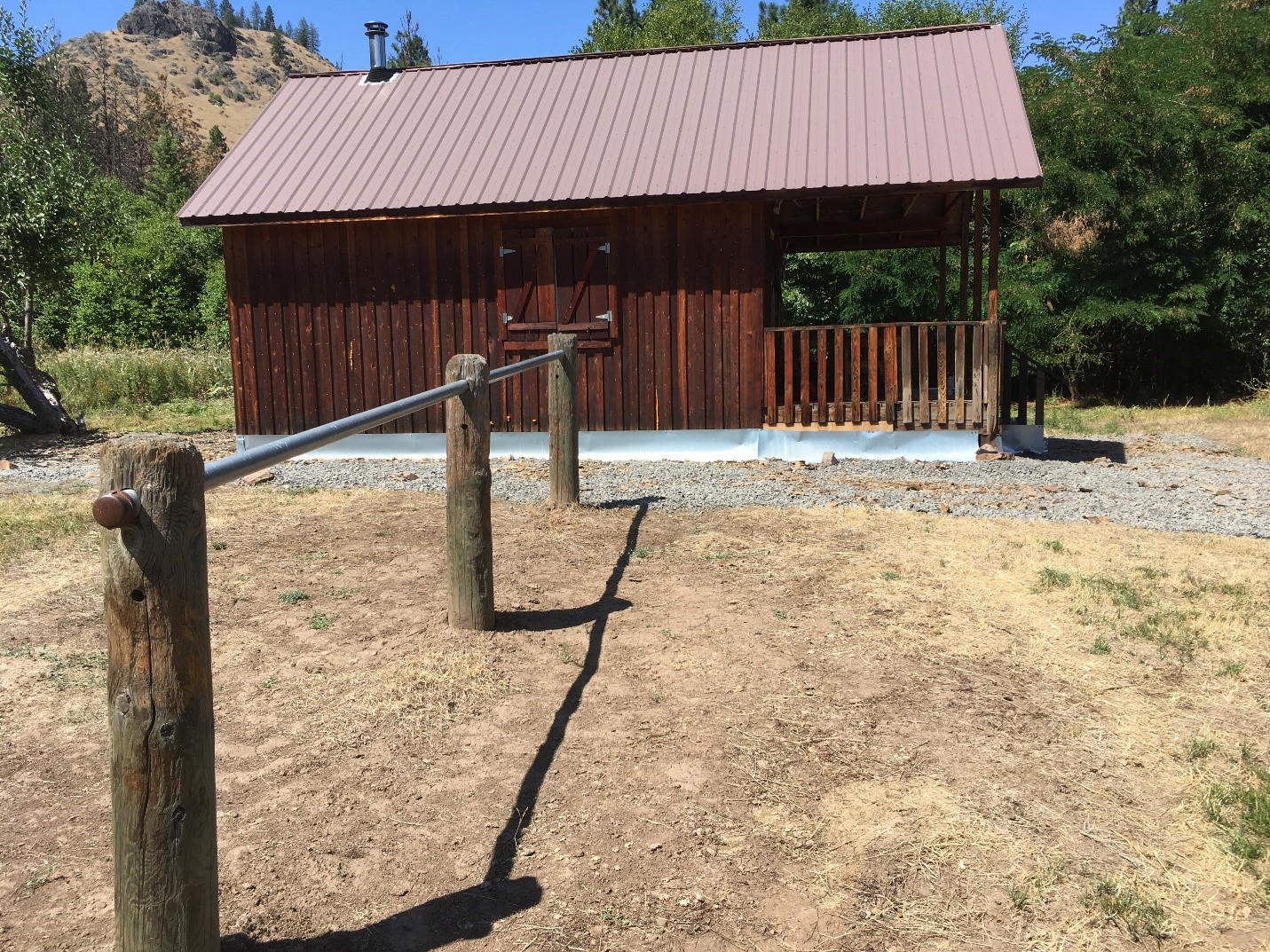
Teachable Moments
We have been working with the University of Idaho for the last couple years to build a relationship where CMWMA can act as a living laboratory or outdoor classroom. We have worked with Dr. Jason Karl to use drones as a way to capture vegetation data for help drive management action and also with Dr. Tracy Johnson to use students to collect habitat classification data along our owl transect. This relationship has fostered multiple opportunities for us to gather much needed data on habitats and species while also providing “teachable moments” to students. As this relationship continues to grow, we hope to expand these efforts to more programs within U of I and other local educational institutions. If you or your organization is interested in participating please feel free to contact me!
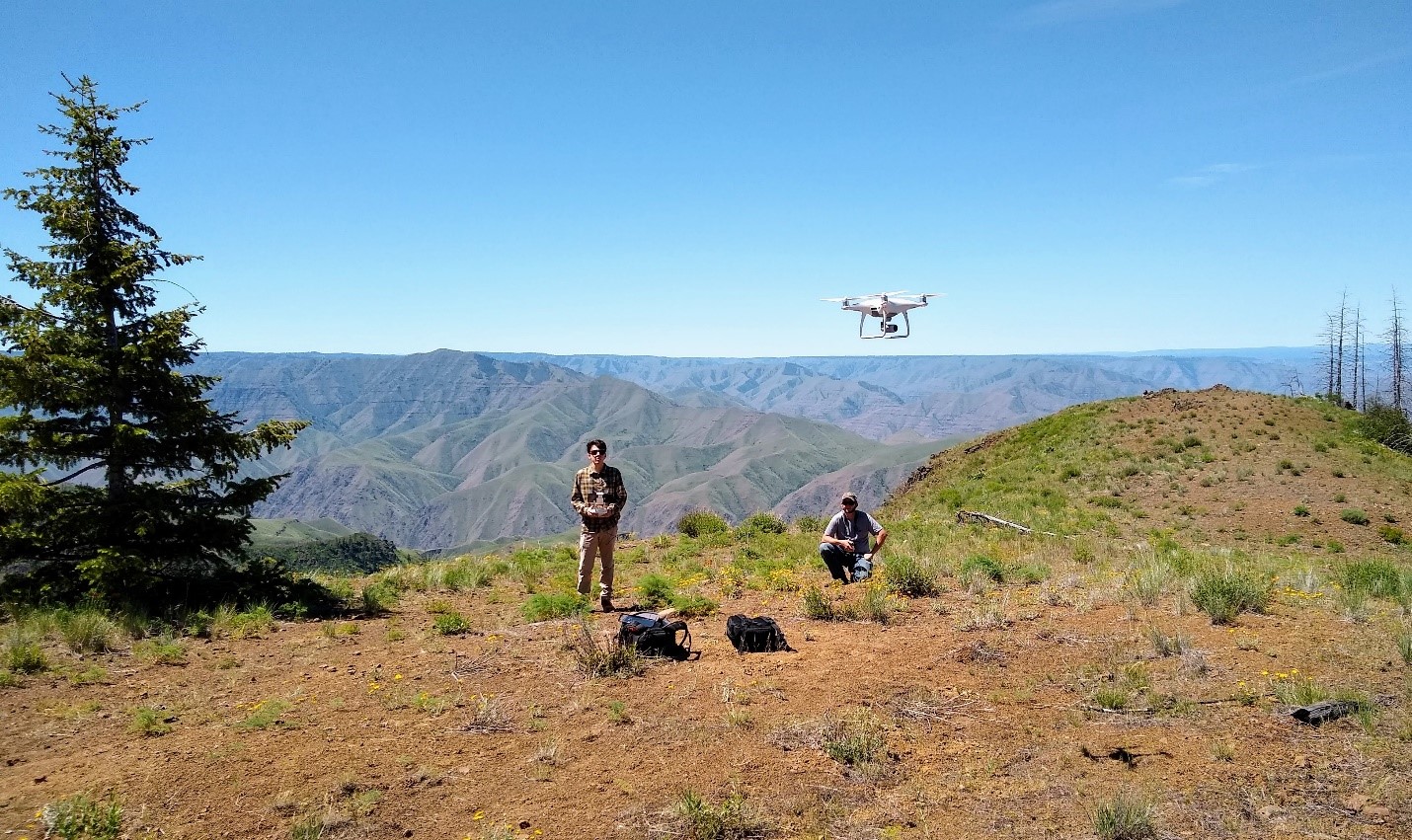
Gates, why so many?
Have you ever wondered why there are so many gates on the WMA? I sure did when I arrived as the manager. However, it sure didn’t take long for me to know the reason! CMWMA is a delicate and fragile ecosystem. Between noxious weeds and wildfire there is a real threat to the habitats and the wildlife that depend on them! The gates on the WMA help protect wildlife from disturbance by motor vehicles. Furthermore, we have long known that some major contributors to spreading noxious weeds are ATVs, UTVs, dirt bikes and other off road vehicles. This is why it is critical to keep your off road vehicle out of areas that are closed. We are losing the fight against noxious weeds in some areas and your help to spread the word on what you can do to keep them from spreading is paramount to help us protect what we have left. Please report motorized trespass to myself, a local Conservation Officer or the Regional Office (208) 799-5010.

Volunteering
What a year for volunteer activities on the WMA! We had several groups show up on the WMA to take part in our riparian restoration project. This project was designed to decrease conifer encroachment, increase riparian hydrology, and increase habitat for many different species. A big thank you to Boy Scouts of America Troop 201, Idaho Backcountry Hunters and Anglers, and the Juvenile Correction Center of Lewiston for all their help on this project. I would like to give another big shout out to Dustin Jenkins who worked on his Eagle Scout Project. He and his crew built 10 fence stiles that were placed this past year across the WMA. The stiles will greatly enhance the sporting public in safely crossing fences. Finally, I’d also like to thank all the other volunteers who participated on the WMA in various activities. It is efforts like yours that helps keep the WMA looking good!
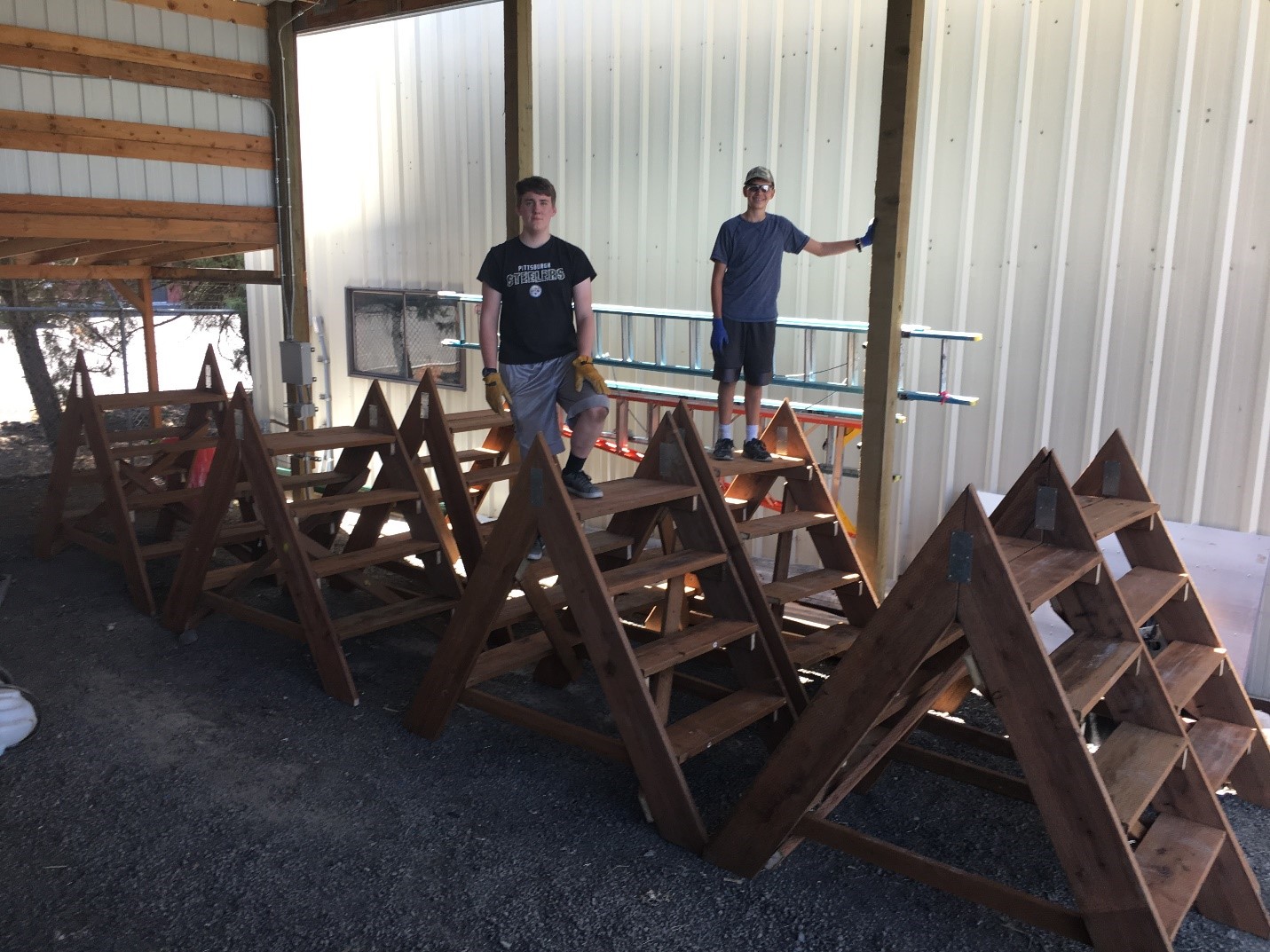
Future
What will 2020 bring? We have big plans this year to shift our focus from much needed facility and cabin maintenance to increasing on the ground habitat management. Currently on the docket is the planting of 45,000 conifer seedlings to help increase forest regeneration from pervious forest fires. As mentioned above, we hope to complete our Mid-Elevation trail project this year but we also hope to improve signage and access at our parking areas. Noxious weed control is always an issue and we will be making some large concerted efforts to tackle starthistle, scotch thistle, white-top and other noxious weeds throughout the WMA. Feel free to contact us if you would like to provide comments, feedback or are interested in volunteering. Additionally, don’t forget to sign in at our registration boxes. This information helps us greatly in tracking usage and securing funding for future projects.
Contact
If you are interested in contacting either Andrew or Jessica you can do so via email at:
andrew.mackey@idfg.idaho.gov, jessica.patterson@idfg.idaho.gov or phone at 208-799-5010.

